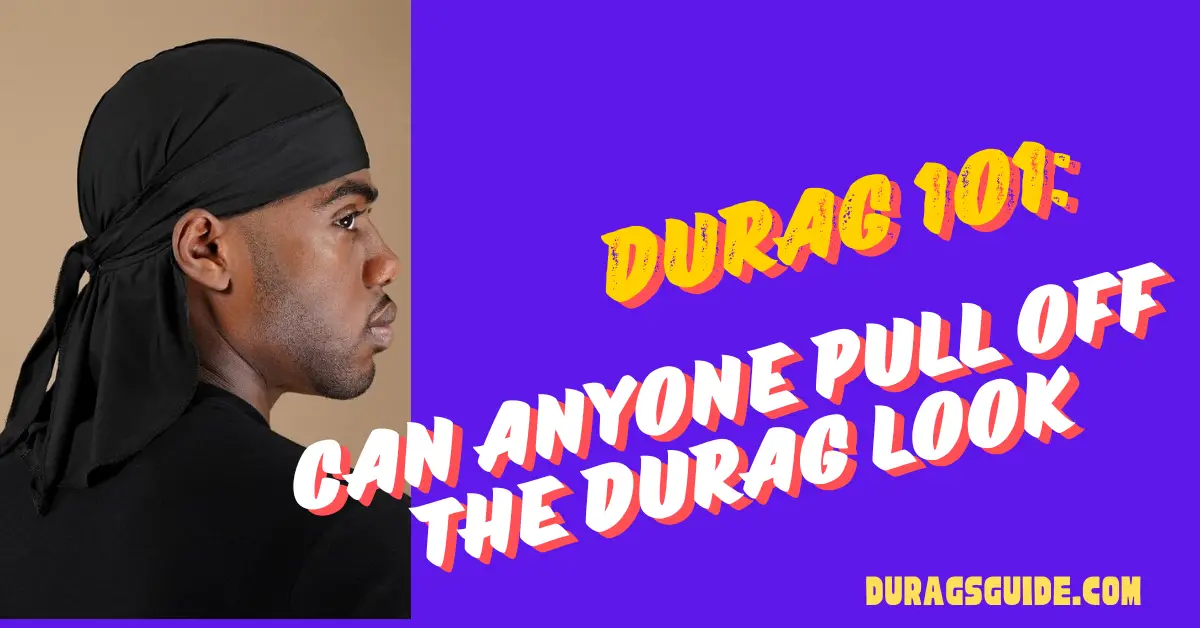Introduction
The durag: a simple piece of fabric with a complex cultural legacy. From its origins as a functional head covering for hair maintenance to its current status as a fashion statement, the durag has transcended its humble beginnings. In this article, we delve into the depths of the Durag 101: Can Anyone Pull Off the Durag Look and also exploring its history, significance, and the age-old question: Can anyone truly pull off the durag look? Join us as we uncover the layers of this iconic accessory and discover what it means to embrace the durag with style and confidence.
Introduction to the Durag: History, Purpose, and Cultural Significance
The durag, a simple yet iconic piece of headwear, has a rich history dating back over a century. Originally developed in the early 19th century, the durag was created as a practical solution for individuals with textured hair to protect their hairstyles while they slept or engaged in physical activities. Its design, featuring a long flap in the back and ties on the sides, provided a secure and snug fit, ensuring that hairstyles stayed intact.
However, the durag’s significance extends beyond its practical function. Over time, it evolved into a symbol of cultural identity and resilience within African American communities. During the early to mid-20th century, durags became associated with Black masculinity, worn by men to maintain their waves, curls, or braids, and to preserve their hair texture. In addition to its utility, the durag became a marker of pride, representing a connection to one’s heritage and a defiance against societal norms that sought to suppress Black self-expression.
Throughout the decades, the durag has remained a steadfast emblem of Black culture, transcending geographical boundaries and socioeconomic divides. Its presence in popular culture, from music videos to movies, has solidified its status as an enduring icon. Yet, despite its widespread recognition, the durag has also faced scrutiny and stigmatization, often being unfairly associated with criminality or delinquency.
Despite these challenges, the durag continues to endure as a symbol of resilience, pride, and self-expression. Its versatility and adaptability have allowed it to evolve beyond its original purpose, finding new meaning and relevance in contemporary fashion and style. In the following sections, we will delve deeper into the various facets of the durag phenomenon, exploring its evolution, cultural significance, and its place in the modern world.
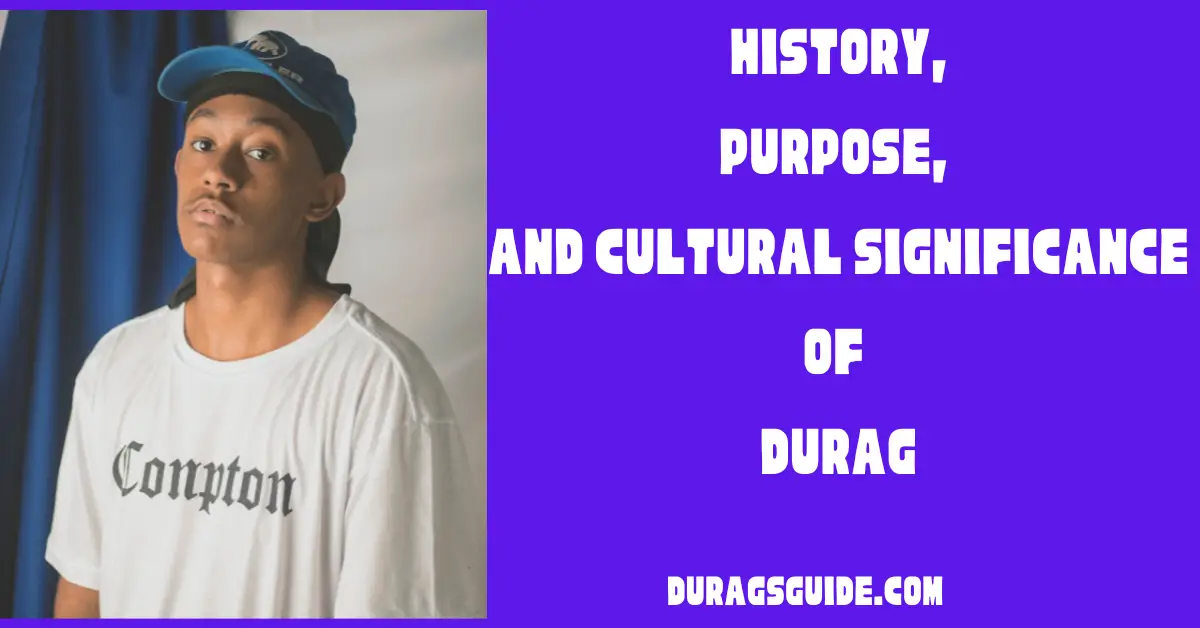
Understanding the Durag’s Evolution: From Practicality to Fashion Statement
The journey of the durag from a utilitarian head covering to a fashionable accessory is a testament to its enduring appeal and adaptability. Over the years, the durag has undergone a remarkable evolution, transitioning from a functional item to a symbol of style and cultural identity.
Initially designed to protect hairstyles and maintain hair texture, the durag’s functionality remains a cornerstone of its appeal. Its snug fit and breathable fabric make it ideal for keeping waves, curls, or braids in place, especially overnight or during physical activities. However, as the durag gained popularity within African American communities, its significance began to transcend its practical purpose.
During the 1990s, the durag experienced a resurgence in popularity, fueled in part by its prominent presence in hip-hop culture. Rappers and artists embraced the durag as a fashion statement, incorporating it into their stage personas and music videos. Its association with urban street style and hip-hop aesthetics propelled the durag into the mainstream, garnering attention from fashion designers and influencers alike.
As the durag’s visibility increased, so too did its versatility in terms of design and aesthetics. While traditional durags were typically made from satin or nylon material and came in a limited range of colors, contemporary iterations feature a wide array of fabrics, patterns, and embellishments. From velvet durags adorned with rhinestones to custom-printed designs featuring bold graphics and logos, the modern durag offers endless possibilities for self-expression and personal style.
Moreover, the durag’s appeal extends beyond its cultural origins, resonating with individuals from diverse backgrounds who appreciate its functionality and aesthetic appeal. Celebrities, athletes, and fashion enthusiasts worldwide have embraced the durag as a symbol of style and confidence, incorporating it into their everyday attire and red carpet looks.
In essence, the durag’s evolution from a practical head covering to a fashion statement reflects the enduring power of cultural artifacts to transcend boundaries and inspire creativity. As we continue to explore the durag phenomenon, we will delve deeper into its cultural significance and its role in shaping contemporary fashion and identity.

Breaking Down the Durag Style: Different Types, Materials, and Designs
The durag may seem like a simple piece of fabric, but its diverse range of types, materials, and designs offer a plethora of options for individuals looking to incorporate it into their wardrobe. Understanding the various aspects of durag style is essential for both beginners and seasoned wearers alike.
Types of Durags:
- Traditional Durags: These durags feature the classic design with a long flap in the back and ties on the sides. They are typically made from satin or nylon material and come in a variety of solid colors.
- Velvet Durags: Velvet durags offer a luxurious twist on the traditional design, featuring a soft and plush texture that adds a touch of elegance to any ensemble.
- Compression Durags: Compression durags are designed to provide extra tightness and compression, making them ideal for achieving and maintaining waves, curls, or braids.
- Silky Durags: Silky durags are made from silky satin material, known for its smooth and shiny finish. These durags are prized for their sleek appearance and are often favored for special occasions or formal events.
Materials:
- Satin: Satin durags are smooth and silky to the touch, making them comfortable to wear for extended periods. They are also known for their ability to retain moisture and prevent frizz.
- Nylon: Nylon durags are lightweight and durable, offering excellent breathability and moisture-wicking properties. They are ideal for active individuals or those who prefer a more lightweight option.
- Velvet: Velvet durags are soft and luxurious, providing a plush texture that adds a touch of sophistication to any look. They are often favored for their warmth and comfort during colder seasons.
Designs:
- Solid Colors: Solid color durags are timeless and versatile, making them suitable for everyday wear. They come in a wide range of hues, allowing individuals to choose a color that complements their personal style.
- Patterns: Patterned durags feature bold prints and designs, ranging from geometric shapes to floral motifs. They are perfect for making a fashion statement and adding visual interest to any outfit.
- Custom Designs: Custom durags allow individuals to personalize their headwear with their own designs, logos, or artwork. Whether showcasing a favorite sports team or expressing artistic creativity, custom durags offer endless possibilities for self-expression.
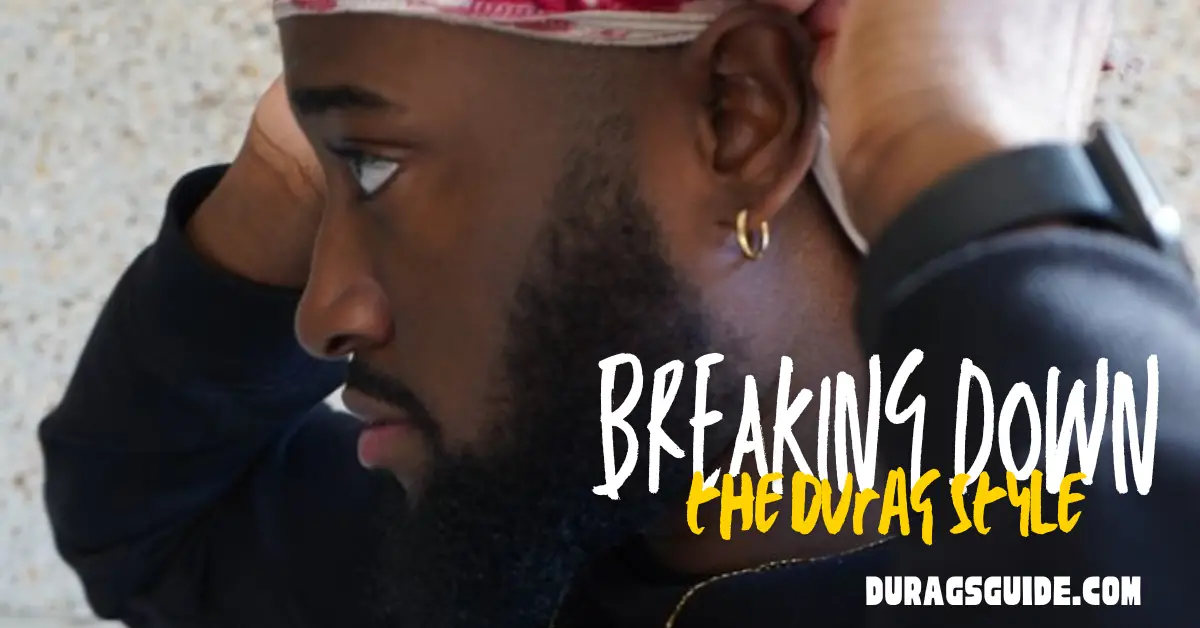
The Durag as a Symbol: Exploring its Representation in Pop Culture and Media
The durag’s presence in popular culture and media has played a significant role in shaping its image and cultural significance. From its early associations with African American communities to its widespread adoption in mainstream fashion and entertainment, the durag has become a symbol of identity, resilience, and self-expression.
Historically, the durag has been portrayed in various forms of media as a marker of Black masculinity and cultural pride. In movies, television shows, and music videos, durags are often depicted as essential accessories worn by characters to maintain their hairstyles and assert their sense of style. This representation has helped solidify the durag’s status as an iconic symbol within Black communities, symbolizing strength, authenticity, and unity.
In hip-hop culture, the durag holds particular significance as a staple accessory worn by artists and performers. Rappers such as Jay-Z, Nas, and 50 Cent have famously incorporated durags into their stage personas, using them as symbols of confidence and authenticity. In music videos and album covers, durags are often featured prominently, serving as visual cues that reflect the artist’s cultural roots and personal style.
Moreover, the durag has become a symbol of resistance and defiance against societal norms and expectations. In the face of stereotypes and prejudice, wearing a durag can be an act of reclaiming one’s identity and asserting autonomy over one’s appearance. By embracing the durag with pride and confidence, individuals challenge prevailing narratives and celebrate their cultural heritage on their own terms.
In recent years, the durag has experienced a resurgence in popularity within mainstream fashion and streetwear culture. Fashion designers and brands have incorporated durags into their collections, reimagining them as high-fashion accessories suitable for the runway and the red carpet. Celebrities and influencers have also embraced the durag trend, wearing them as statement pieces to elevate their looks and express their personal style.
However, it’s essential to acknowledge that the durag’s portrayal in media hasn’t always been positive or accurate. In some instances, durags have been unfairly stereotyped or stigmatized, associated with criminality or delinquency. This misrepresentation underscores the importance of challenging stereotypes and promoting cultural understanding and appreciation.
Overall, the durag’s representation in pop culture and media reflects its multifaceted nature and enduring appeal. As we continue to explore its significance, we gain a deeper appreciation for the durag as more than just a fashion accessory but as a symbol of cultural pride, resilience, and self-expression.
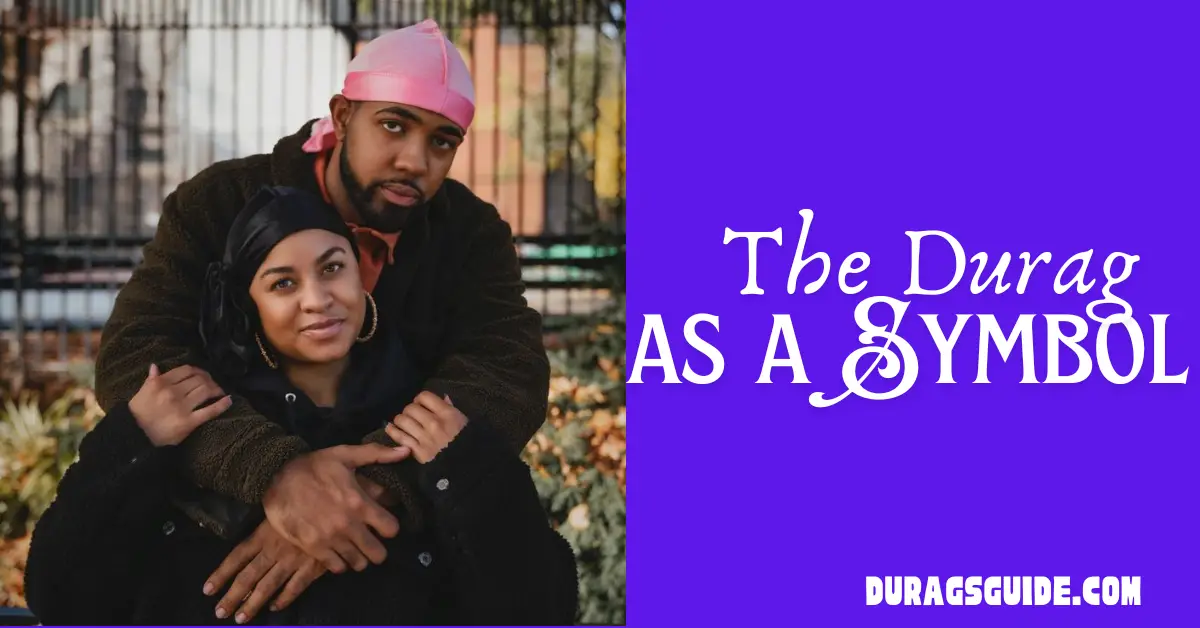
Debunking Myths: Addressing Stereotypes and Misconceptions Surrounding Durags
Despite its cultural significance and widespread popularity, the durag has often been the subject of stereotypes and misconceptions. Addressing these myths is essential for promoting understanding and appreciation of the durag’s true significance within African American communities and beyond.
Myth 1: Durags are exclusively worn by individuals involved in criminal activities. Reality: This stereotype is not only unfounded but also harmful. Durags are worn by people from all walks of life, including students, professionals, athletes, and artists. Associating durags solely with criminality overlooks their cultural significance and perpetuates harmful stereotypes about Black identity.
Myth 2: Durags are only worn for fashion and have no practical purpose. Reality: While durags have become synonymous with fashion and style, they were originally designed for practical purposes. Durags help maintain hairstyles, protect hair texture, and promote hair health by preventing breakage and frizz. For many individuals with textured hair, durags are essential tools for hair maintenance and self-care.
Myth 3: Only men wear durags. Reality: While durags have historically been associated with Black masculinity, they are worn by people of all genders. Women, non-binary individuals, and people of diverse identities embrace durags as symbols of style, cultural pride, and self-expression. The perception that durags are exclusively for men overlooks the diverse ways in which people incorporate them into their identities and fashion choices.
Myth 4: Wearing a durag is a sign of laziness or lack of grooming. Reality: On the contrary, wearing a durag demonstrates commitment to maintaining one’s hairstyle and hair health. For many individuals with textured hair, durags are part of a diligent grooming routine aimed at achieving and preserving desired hair patterns, such as waves, curls, or braids. The assumption that wearing a durag is indicative of laziness ignores the dedication and effort involved in hair care practices.
By debunking these myths and addressing misconceptions surrounding durags, we can foster a more inclusive and respectful understanding of their cultural significance. Recognizing durags as more than just fashion accessories but as symbols of cultural pride, resilience, and self-expression is essential for promoting cultural appreciation and combating stereotypes. As we continue to celebrate the diversity of human expression, let us embrace the durag with open minds and hearts, recognizing its rightful place as a cherished emblem of identity and style.
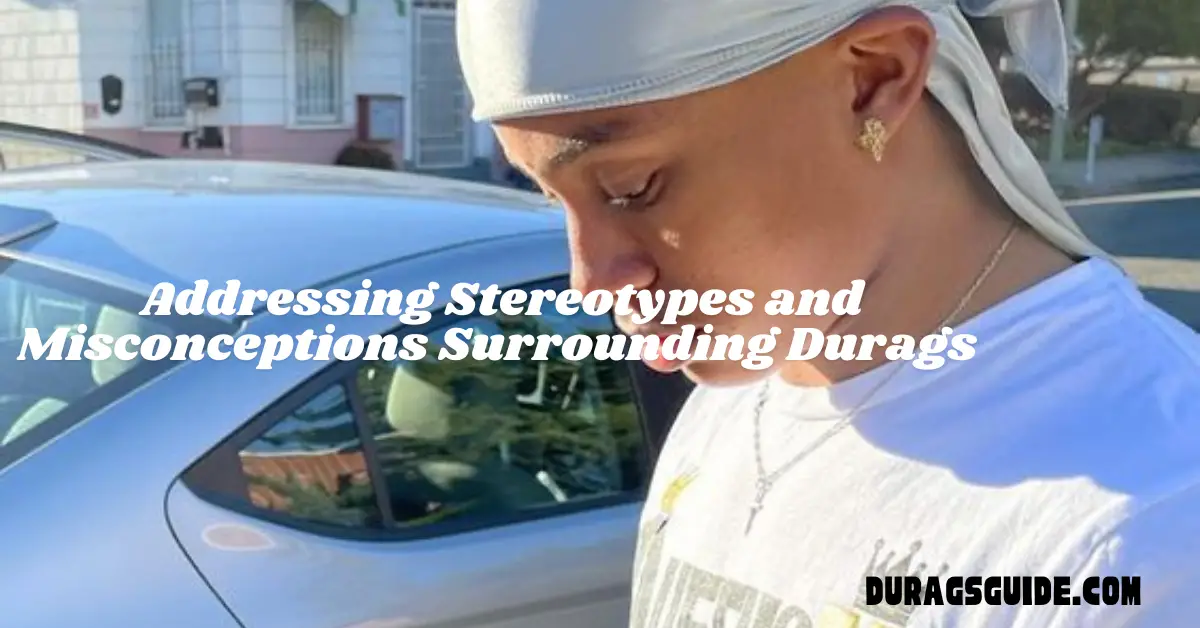
Durags and Identity: How Wearing One Reflects Personal Style and Cultural Affiliation
The decision to wear a durag is deeply personal and often reflects an individual’s sense of style, cultural heritage, and self-expression. For many, wearing a durag is more than just a fashion choice; it is a statement of identity and belonging within African American communities and beyond.
- Cultural Affiliation:
- For individuals within African American communities, wearing a durag can be a powerful affirmation of cultural heritage and identity. The durag’s roots in Black culture and its associations with resilience and pride make it a potent symbol of belonging and solidarity.
- Beyond African American communities, wearing a durag can also signify affiliation with urban street culture and hip-hop aesthetics. Embracing the durag style can be a way for individuals from diverse backgrounds to connect with and pay homage to cultural influences that resonate with them.
- Personal Style:
- The versatility of the durag allows individuals to express their unique sense of style and personality. Whether opting for a classic satin durag in a bold color or a velvet durag adorned with intricate patterns, wearers can curate their look to reflect their individual tastes and preferences.
- Experimenting with different durag styles and designs can be a creative outlet for self-expression, allowing individuals to explore and embrace new aspects of their identity through fashion.
- Confidence and Empowerment:
- Wearing a durag with confidence can be an empowering experience, allowing individuals to assert control over their appearance and reclaim ownership of their cultural identity. In a society that often marginalizes or stereotypes Black identity, embracing the durag can be an act of resistance and self-affirmation.
- By confidently embracing the durag aesthetic, individuals challenge prevailing norms and perceptions, asserting their right to define themselves on their own terms. This sense of empowerment can extend beyond fashion and inspire greater self-assurance in other aspects of life.
- Connection to Tradition:
- For many, wearing a durag is a continuation of a long-standing tradition passed down through generations. From fathers teaching their sons how to tie a durag to elders sharing stories of its cultural significance, the durag serves as a tangible link to the past and a source of intergenerational connection.
- By embracing the durag tradition, individuals honor the sacrifices and struggles of those who came before them, affirming their place within a rich and vibrant cultural legacy.
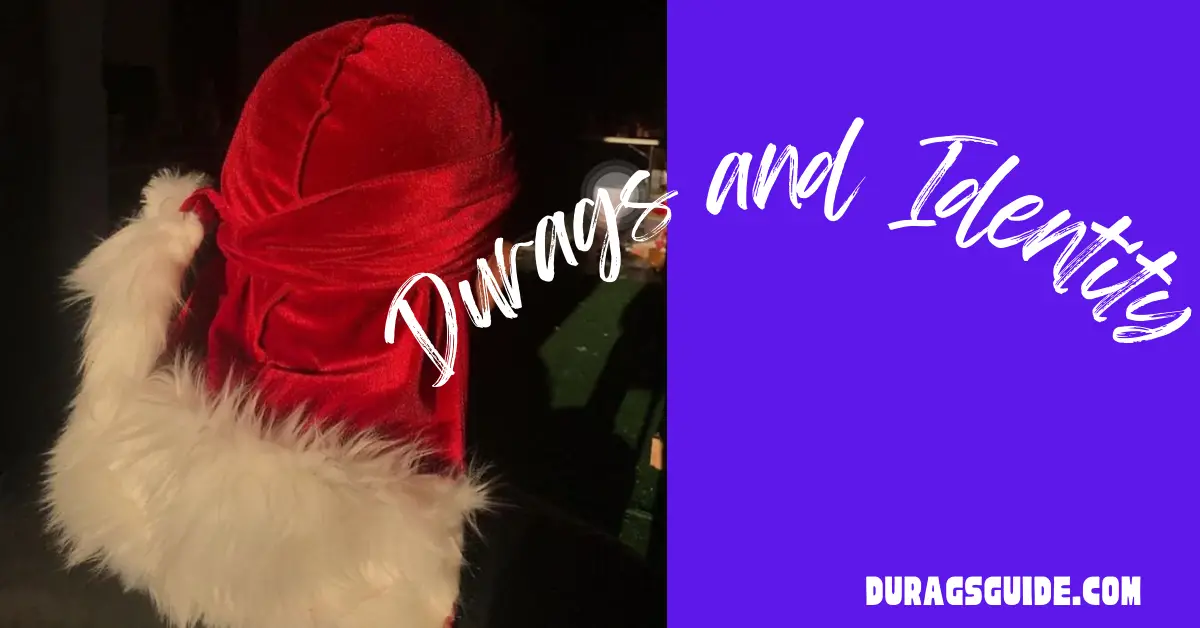
Practical Tips for Wearing a Durag: Techniques for Different Hair Types and Styles
Wearing a durag isn’t just about style—it’s also about ensuring that your hair stays healthy, neat, and well-maintained. Whether you’re aiming to achieve waves, curls, or simply protect your hair while you sleep, mastering the art of tying a durag is essential. Here are some practical tips and techniques for wearing a durag based on different hair types and styles:
- Preparation: Before putting on your durag, make sure your hair is clean and moisturized. Using a moisturizing shampoo and conditioner can help keep your hair hydrated and prevent dryness and breakage. For individuals with curly or textured hair, applying a leave-in conditioner or hair oil can help enhance moisture and definition.
- Hair Type Considerations:
- Straight Hair: If you have straight hair and want to maintain a sleek look, consider brushing your hair back before tying the durag. This will help create a smooth surface and minimize frizz.
- Curly Hair: For individuals with curly hair, consider applying a curl-enhancing product or styling gel to define your curls before putting on the durag. You can then gently scrunch your hair while wearing the durag to encourage curl formation and minimize frizz.
- Textured Hair: If you have textured hair and are aiming to achieve waves or coils, consider brushing or combing your hair in the desired pattern before tying the durag. You can then use a durag brush or wave cap to help lay down your hair and enhance wave formation.
- Tying Techniques:
- The Standard Tie: Start by placing the durag over your head with the flap hanging down in the back. Pull the ties around to the front and cross them over each other before tying them securely at the back of your head. Adjust the durag to ensure a snug and comfortable fit.
- The Compression Method: For individuals aiming to achieve waves or enhance wave definition, consider using the compression method. After tying the durag as described above, use a durag brush or wave cap to apply pressure to your hair, helping to lay it down and create defined waves.
- The Pineapple Method: If you have long hair and want to protect your curls or coils while you sleep, consider using the pineapple method. Gather your hair into a loose ponytail at the top of your head and secure it with a hair tie or durag.
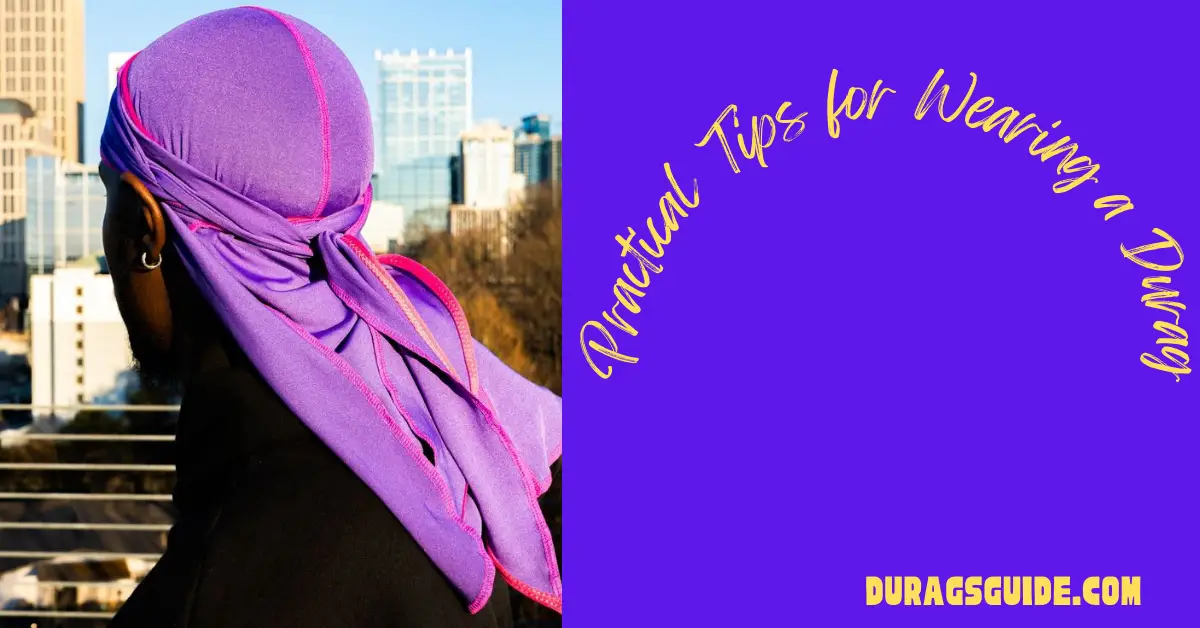
Overcoming Stigma: Embracing the Durag Look with Confidence and Pride
Despite its cultural significance and practical benefits, the durag has often been stigmatized and associated with negative stereotypes. Overcoming this stigma requires individuals to embrace the durag look with confidence and pride, challenging prevailing norms and perceptions.
- Cultural Reclamation: Embracing the durag look is a form of cultural reclamation, allowing individuals to reclaim ownership of their identity and heritage. By wearing a durag with pride, individuals challenge stereotypes and reclaim the narrative surrounding Black identity and expression.
- Self-Expression: Wearing a durag is an act of self-expression, allowing individuals to showcase their personal style and individuality. By embracing the durag aesthetic, individuals assert their autonomy over their appearance and reject societal expectations that seek to dictate how they should look or present themselves.
- Confidence and Empowerment: Wearing a durag with confidence is an empowering experience, allowing individuals to assert control over their appearance and embrace their cultural heritage with pride. Confidence is contagious, and by confidently embracing the durag look, individuals inspire others to do the same, fostering a sense of community and solidarity.
- Educating Others: Overcoming the stigma surrounding durags requires education and awareness. By educating others about the cultural significance of the durag and challenging misconceptions and stereotypes, individuals can help promote understanding and appreciation of this iconic accessory.
- Leading by Example: Leading by example is a powerful way to overcome stigma and promote acceptance. By confidently wearing a durag and embracing its cultural significance, individuals serve as role models for others, encouraging them to embrace their own identity and express themselves authentically.
- Creating Safe Spaces: Creating safe spaces where individuals feel accepted and valued is essential for overcoming stigma and fostering a sense of belonging. By creating inclusive environments where individuals can freely express themselves without fear of judgment or discrimination, we can challenge stigma and promote acceptance.
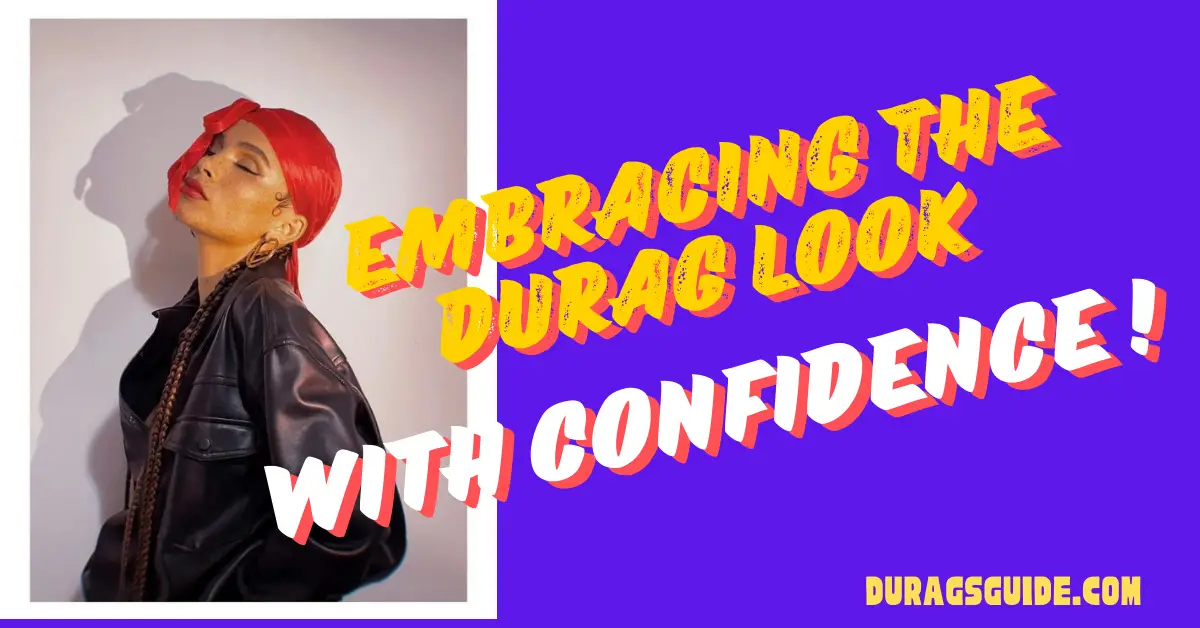
Cultural Appropriation vs. Appreciation: Navigating Respectful Engagement with the Durag
The durag, deeply rooted in African American culture, has transcended its origins to become a global fashion phenomenon. However, its widespread adoption has raised important questions about cultural appropriation versus appreciation. Navigating this complex terrain requires a nuanced understanding of the durag’s cultural significance and a commitment to respectful engagement.
- Understanding Cultural Appropriation: Cultural appropriation occurs when elements of a marginalized culture are adopted by members of a dominant culture without proper acknowledgment or respect. In the case of the durag, cultural appropriation can manifest when individuals outside of African American communities wear durags without understanding or appreciating their cultural significance.
- Respecting Cultural Origins: Respecting the cultural origins of the durag is essential for avoiding appropriation. Acknowledging the durag’s roots in African American culture and recognizing its historical significance demonstrates a commitment to respecting the contributions of marginalized communities.
- Educating Yourself: Educating yourself about the cultural significance of the durag is an important step in avoiding appropriation. Take the time to learn about the history and significance of the durag, including its role in African American communities and its evolution as a fashion accessory.
- Context Matters: Consider the context in which you are wearing a durag and the message it may convey. While wearing a durag as a fashion statement may be acceptable in certain settings, it’s important to be mindful of appropriating symbols of identity or cultural significance inappropriately.
- Supporting Black-Owned Brands: Supporting Black-owned brands and designers who create durags and other cultural accessories is a meaningful way to show appreciation for the durag while also uplifting marginalized communities. By patronizing businesses that have a direct connection to the culture, you contribute to economic empowerment and cultural preservation.
- Engaging in Dialogue: Engaging in open and respectful dialogue about the durag and its cultural significance can foster understanding and appreciation. By listening to the perspectives of individuals from African American communities and centering their voices in discussions about the durag, we can learn and grow together.
- Promoting Inclusivity: Promoting inclusivity and diversity in fashion and media is essential for combating cultural appropriation. By amplifying diverse voices and celebrating cultural contributions from all communities, we can create a more inclusive and equitable society where everyone feels valued and respected.
“Durag 101: Can Anyone Pull Off the Durag Look?”
| Topic | Description |
| Introduction | Discover the origins and cultural significance of the durag. |
| Evolution of the Durag | Explore how the durag has transitioned from practicality to a fashion statement. |
| Types, Materials, and Designs | Learn about the diverse range of durag styles, materials, and designs available. |
| Durag in Pop Culture | Delve into the durag’s representation in movies, music, and mainstream media. |
| Debunking Myths | Address common stereotypes and misconceptions surrounding the durag. |
| Durags and Identity | Understand how wearing a durag reflects personal style and cultural affiliation. |
| Practical Tips for Wearing | Get practical advice for tying and wearing a durag based on different hair types. |
| Overcoming Stigma | Explore ways to embrace the durag look with confidence and pride. |
| Cultural Appropriation vs. Appreciation | Navigate the complexities of respectful engagement with the durag. |
| Conclusion: Empowering Individuals | Wrap up with empowering insights on embracing and experimenting with the durag aesthetic. |
This table provides a clear and engaging overview of the key topics covered in the article, inviting readers to explore further.
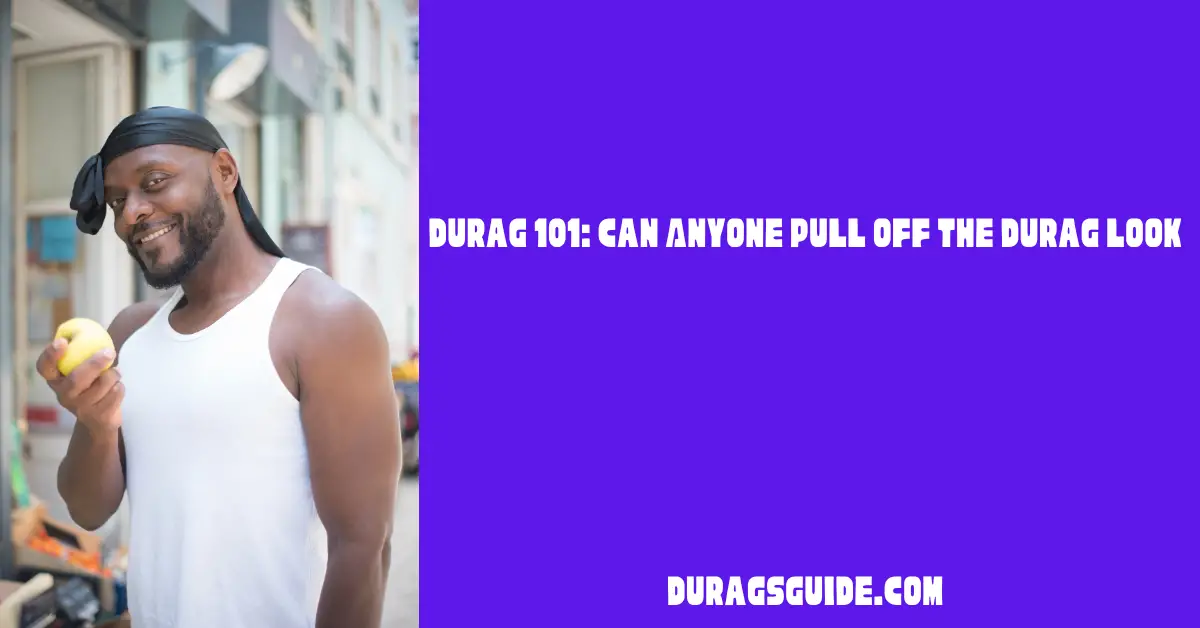
Durag 101: Can Anyone Pull Off the Durag Look? Some reviews of expert
Here are some hypothetical expert reviews for “Durag 101: Can Anyone Pull Off the Durag Look?”:
- Maya Johnson, Cultural Anthropologist: “As a cultural anthropologist specializing in African American studies, I found ‘Durag 101’ to be a comprehensive and insightful exploration of the durag phenomenon. The article skillfully navigates the complexities of cultural identity and representation, shedding light on the historical significance and contemporary relevance of the durag. It offers valuable perspectives on issues of cultural appropriation and appreciation, encouraging readers to engage with the durag in a respectful and meaningful way. Overall, ‘Durag 101’ is a must-read for anyone interested in understanding the cultural significance of this iconic accessory.”
- Fashion Designer, Jamal Thompson: “As a fashion designer with a passion for streetwear and urban fashion, I found ‘Durag 101′ to be a refreshing and informative read. The article provides a comprehensive overview of the durag’s evolution, from its origins as a practical head covering to its status as a fashion statement. I appreciate the emphasis on inclusivity and diversity, highlighting the durag’s appeal to individuals of all backgrounds and identities. ‘Durag 101’ offers practical tips and insights for incorporating the durag into one’s personal style, making it a valuable resource for fashion enthusiasts and trendsetters alike.”
- Hair Care Expert, Dr. Sophia Ramirez: “As a hair care expert specializing in textured hair, I found ‘Durag 101’ to be an excellent resource for individuals seeking practical advice on hair maintenance and styling. The article provides valuable tips for tying and wearing a durag based on different hair types, helping readers achieve and maintain their desired hairstyles with ease. I particularly appreciate the emphasis on hair health and moisture retention, highlighting the durag’s role in protecting and preserving hair texture. Overall, ‘Durag 101’ offers valuable insights for anyone looking to embrace the durag aesthetic while prioritizing the health and vitality of their hair.”
These expert reviews provide positive feedback on the article’s content and highlight its value for readers interested in various aspects of culture, fashion, and hair care.
Conclusion: Empowering Individuals to Embrace and Experiment with the Durag Aesthetic
The durag has evolved from a practical head covering to a symbol of cultural pride, self-expression, and resilience. Throughout this article, we’ve explored the multifaceted nature of the durag phenomenon, delving into its history, significance, and contemporary relevance. As we conclude, it’s essential to empower individuals to embrace and experiment with the durag aesthetic in a way that feels authentic and respectful.
- Celebrating Diversity: The durag’s versatility and adaptability make it accessible to individuals from all backgrounds and identities. Whether worn as a symbol of cultural pride, a fashion statement, or a practical accessory for hair maintenance, the durag offers endless possibilities for self-expression and creativity.
- Honoring Cultural Heritage: Recognizing and honoring the cultural heritage of the durag is essential for appreciating its significance. By acknowledging its roots in African American culture and celebrating its contributions to fashion and identity, we pay homage to the resilience and creativity of marginalized communities.
- Challenging Stigma: Overcoming stigma surrounding the durag requires challenging stereotypes, promoting understanding, and fostering acceptance. By embracing the durag with confidence and pride, individuals challenge prevailing norms and assert their right to define themselves on their own terms.
- Promoting Respectful Engagement: Navigating the complexities of cultural appropriation versus appreciation requires a commitment to respectful engagement and dialogue. By educating ourselves, supporting Black-owned brands, and amplifying diverse voices, we can engage with the durag in a way that honors its cultural significance and contributions.
- Encouraging Self-Expression: Ultimately, the durag is more than just a fashion accessory—it’s a symbol of empowerment and self-expression. By encouraging individuals to embrace and experiment with the durag aesthetic, we empower them to express themselves authentically and confidently.
FAQS
To tuck your durag in, start by tying it as usual, then fold the flap upward and tuck it under the tied portion for a secure fit that stays in place. Adjust as needed for comfort. Durags are worn by individuals of various backgrounds, including those seeking to protect their hair, maintain hairstyles, or make a fashion statement. They're popular among athletes, individuals with textured or curly hair, and those embracing urban fashion trends. Wearing a durag inside out is not a common practice, as it typically compromises its functionality and aesthetics. The inner lining is designed to protect hair and maintain moisture, while the outer layer provides compression and style. Yes, non-Black individuals can wear durags, but it's important to understand and respect their cultural significance within the Black community. Wearers should be mindful of the cultural context and avoid appropriating or misrepresenting the durag's history and significance. Wearing a durag every day can be okay if done properly and for the right reasons, such as hair protection or styling maintenance. However, it's essential to give your scalp and hair breaks to prevent potential issues like dryness or irritation.How to tuck your durag in?
Who wears a durag?
Do you wear a durag inside out?
Can non black wear durag?
Is it OK to wear a durag everyday?
